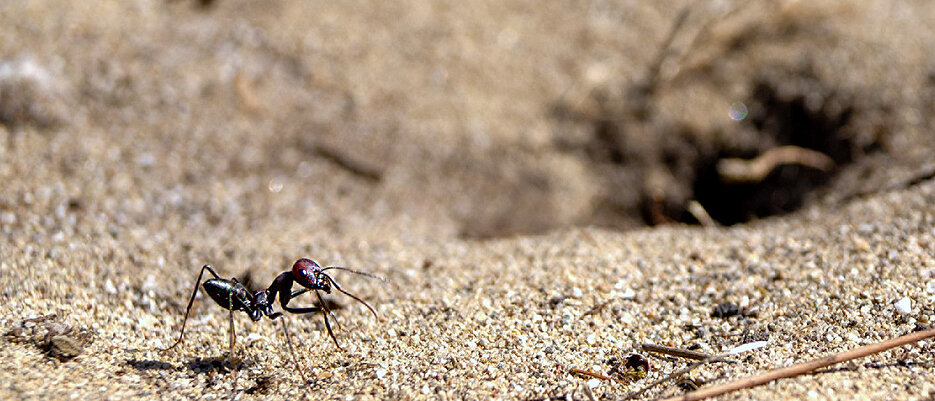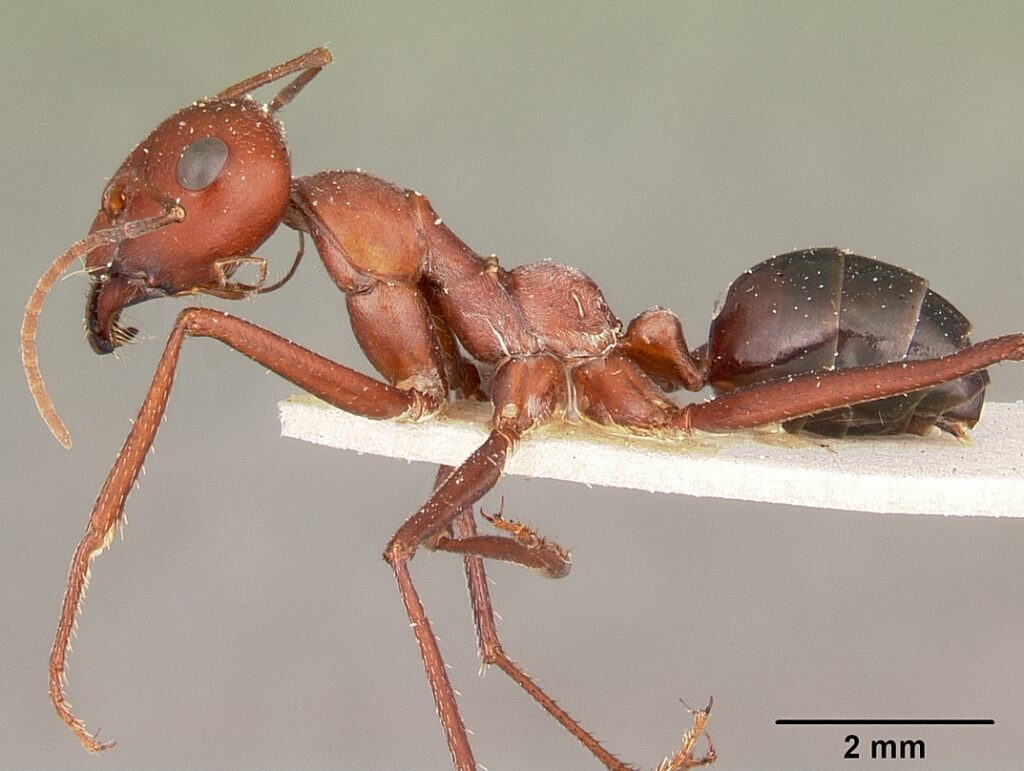
If you’re an ant living in the desert, things are often rough. It’s not just the extreme heat and the scarcity of food that’s problematic, it’s also finding your way. How do you make your way back to your nest when everything around you pretty much looks the same?
A few years ago, researchers discovered that deserts ants (of the Cataglyphis genus) possess rare abilities that enable them to orient themselves to the Earth’s magnetic field. But how do they do it? They only have around 1 million neurons (compared to our 100 billion) — so, where is their internal compass?
Navigating magnetism
The new study was carried out by researchers from Wurzburg University, Germany, and spearheaded by Professor Wolfgang Rössler. Previously, the team had found clues that the ants first attune themselves to the Earth’s magnetic field during an orientation walk. This walk serves as a sort of calibration. Before it, the ants don’t really know how to use their magnetic ability.
The ants start their orientation walk by coming out of the nest and exploring the immediate surroundings. They rotate their bodies, exploring what they can sense and make small pauses. But when they make these pauses, they are always facing the direction of the nest entrance — even though they can’t see it.
In their new study, the team wanted to see what changes in the brains of ants during this walk. The researchers took several of these young ants and had them do their orientation under different conditions. Some of the ants were left in a natural environment, while others were in a manipulated magnetic field. This rendered their orientation walk useless and prevented them from developing a reference system. Then, the researchers compared the brains of the ants in the two situations.
What happens inside the ants’ brains

The navigation ability of the ants in the two groups was notably different. But this different learning process also left a lasting imprint in their brains.
“Our neuroanatomical brain analyses show that ants exposed to an altered magnetic field have a smaller volume and fewer synaptic complexes in an area of the brain responsible for the integration of visual information and learning, the so-called mushroom body,” explain Fleischmann and Grob. In the central complex, the region of the ant’s brain in which spatial orientation is anchored, the same findings were observed under certain conditions, the researchers write in the study.
The region in which the most notable changes were observed, the mushroom body, is a critical part of an insect’s brain, serving as a key center for processing sensory information as well as learning and memory. This structure is composed of densely packed neurons and is especially prominent in insects where it integrates signals from various sensory inputs, including smell, taste, and visual cues, enabling insects to perform complex behaviors such as navigation, foraging, and recognizing patterns. Apparently, it also includes magnetism.
Basically, the information from the unmanipulated ants’ senses (including the magnetic senses) triggered development in their brains and their neuronal activity. The number and strength of synaptic connections increased remarkably compared to the ants who couldn’t use a natural magnetic field.
The results of their experiments prove “that ants need a functioning magnetic compass during their learning walks in order to calibrate their visual compass and at the same time store images of the nest environment in their long-term memory”, as Pauline Fleischmann and Robin Grob say.
Magnetic superpowers
Being able to detect and use the Earth’s magnetic field for orientation is akin to a superpower. But desert ants aren’t the only creatures that exhibit the ability to orient themselves using the planet’s magnetic field.
A wide array of animals harness Earth’s magnetic field for orientation and navigation, a phenomenon known as magnetoreception. Among the most fascinating examples are migratory birds, which undertake long-distance journeys with remarkable precision, sea turtles that navigate across oceans to return to their natal beaches, and salmon that find their way back to their freshwater birthplaces.
Even mammals, including bats and certain species of whales, have been observed using Earth’s magnetic field to orient themselves. This ability to sense and utilize the magnetic field is an evolutionary adaptation that spans multiple taxa, showcasing the diverse strategies life on Earth employs to navigate its complex environments.
Some insects, like bees, also do it. However, ants are among the simplest creatures with this ability, which opens up new opportunities for research. Their small nervous system is relatively easy to study directly, offering a unique opportunity to investigate the exact neuronal pathways that are used for this type of orientation.
“Our results demonstrate that information from the Earth’s magnetic field is integrated into the ants’ internal compass (central complex) and into the learning and memory centers (mushroom bodies). Together with our behavioral analyses, the results show that the ants use magnetic information both as a navigational compass and as a reference system for visual compass calibration,” the research authors conclude.
The study was published in PNAS.






